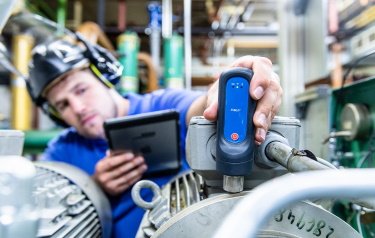
Contents
- Introduction
- Sources of Vibration on Ships
- Impact of Vibration on Ship Operations
- Structural Integrity
- Equipment Performance
- Crew Comfort and Safety
- Environmental Impact
- Vibration Monitoring Techniques
- Accelerometers
- Vibration Sensors
- Online Monitoring Systems
- Portable Analysers
- Vibration Control Methods
- Balancing and Alignment
- Damping Techniques
- Isolation Systems
- Maintenance and Repairs
- Case Studies and Real-World Applications
- Popular Manufacturers and Models of Dampening Systems
- Conclusion
1. Introduction
Vibration monitoring and control are critical aspects of maritime operations, essential for maintaining the safety, efficiency, and longevity of ships. Unchecked vibrations can lead to severe structural damage, equipment failure, and even pose risks to crew members. This article explores the importance of vibration monitoring and control, the techniques used, and real-world applications in the maritime industry.
2. Sources of Vibration on Ships
Vibrations on ships can originate from various sources, including:
- Main Engines and Auxiliary Engines: The primary source of mechanical vibrations.
- Propellers and Shafts: Imbalances and misalignments can cause significant vibrations.
- Machinery and Equipment: Pumps, compressors, and other onboard machinery contribute to vibrations.
- Hydrodynamic Forces: Interaction of the hull with water, particularly in rough seas.
3. Impact of Vibration on Ship Operations
Structural Integrity
- Fatigue and Cracks: Continuous vibrations can lead to metal fatigue and the development of cracks in the ship’s structure.
- Hull Integrity: Vibrations can compromise the integrity of the hull, leading to potential water ingress and safety hazards.
Equipment Performance
- Machinery Wear and Tear: Vibrations accelerate the wear and tear of mechanical components, leading to frequent breakdowns.
- Operational Efficiency: Vibrations can disrupt the optimal functioning of engines and other equipment, reducing fuel efficiency and performance.
Crew Comfort and Safety
- Health Risks: Prolonged exposure to vibrations can cause health issues such as vibration white finger (VWF) and other musculoskeletal disorders.
- Fatigue: Constant vibrations can lead to crew fatigue, impacting their performance and increasing the risk of accidents.
Environmental Impact
- Noise Pollution: Vibrations contribute to noise pollution, affecting marine life and causing regulatory compliance issues.
- Increased Emissions: Inefficient machinery operation due to vibrations can result in higher emissions, impacting the environment.
4. Vibration Monitoring Techniques
Accelerometers
- Function: Measure acceleration forces to detect vibrations.
- Application: Used on engines, shafts, and other machinery to monitor vibration levels continuously.
Vibration Sensors
- Function: Detect and measure vibration intensity and frequency.
- Application: Installed on critical equipment to provide real-time data on vibration conditions.
Online Monitoring Systems
- Function: Provide continuous, real-time monitoring and analysis of vibration data.
- Application: Integrated with shipboard systems for instant alerts and diagnostics.
Portable Analysers
- Function: Handheld devices used for periodic vibration measurement and analysis.
- Application: Useful for maintenance teams to perform spot checks and diagnostics.
5. Vibration Control Methods
Balancing and Alignment
- Propellers and Shafts: Regular balancing and alignment to minimize vibrations.
- Engine Components: Ensuring all rotating components are properly balanced.
Damping Techniques
- Dampers: Installing vibration dampers on machinery and structures.
- Isolation Mounts: Using mounts that absorb and isolate vibrations from sensitive equipment.
Isolation Systems
- Floating Floors: Installing floating floors to isolate vibrations in living quarters and control rooms.
- Flexible Couplings: Using flexible couplings to reduce vibrations transmitted through the propulsion system.
Maintenance and Repairs
- Regular Inspections: Conducting routine inspections to identify and address sources of vibration.
- Timely Repairs: Performing necessary repairs and replacements to maintain optimal performance.
6. Case Studies and Real-World Applications
Case Study 1: LNG Carrier “Methane Spirit”
Vessel Name: LNG Carrier “Methane Spirit” Issue: Significant vibrations were detected in the propeller shaft system, leading to increased wear and potential failure. Solution: The vessel was equipped with a comprehensive vibration monitoring system from SKF, including accelerometers and online monitoring tools. The system identified the imbalance in the propeller shaft, allowing for corrective measures. Result: Post-correction, the vibrations were significantly reduced, leading to a 10% improvement in fuel efficiency and extended lifespan of the propeller shaft components.
Case Study 2: Cruise Ship “Harmony of the Seas”
Vessel Name: Cruise Ship “Harmony of the Seas” Issue: Crew and passengers reported discomfort due to excessive vibrations in living quarters and public areas. Solution: Advanced isolation systems from Brüel & Kjær were installed, including floating floors and vibration dampers. Result: The isolation systems successfully mitigated the vibrations, enhancing comfort for passengers and crew, and reducing the risk of structural fatigue.
7. Popular Manufacturers and Models of Dampening Systems
SKF
- Model: SKF Vibration Monitoring System
- Features: Comprehensive real-time monitoring, advanced diagnostics, and predictive maintenance capabilities.
- Applications: Used in various shipboard applications for engines, propellers, and auxiliary machinery.
Brüel & Kjær
- Model: Vibration Isolation and Damping Systems
- Features: High-performance dampers, isolation mounts, and floating floor systems.
- Applications: Ideal for cruise ships and other vessels where crew and passenger comfort is critical.
Schaller Automation
- Model: VIB 3.0 Vibration Monitoring System
- Features: Continuous vibration monitoring with advanced analysis tools.
- Applications: Suitable for large commercial vessels and tankers.
Emerson
- Model: CSI 2140 Machinery Health Analyzer
- Features: Portable vibration analyser with advanced diagnostic capabilities.
- Applications: Used for spot checks and periodic maintenance assessments.
8. Conclusion
Vibration monitoring and control are vital for ensuring the safety, efficiency, and longevity of maritime vessels. By employing advanced monitoring techniques and implementing effective control methods, ship operators can mitigate the adverse effects of vibrations, leading to improved performance, reduced maintenance costs, and enhanced safety for crew and passengers. Utilizing products from reputable manufacturers like SKF, Brüel & Kjær, and Emerson ensures robust and reliable vibration management solutions.
For more detailed insights and updates on maritime technologies, visit maritimehub.com




